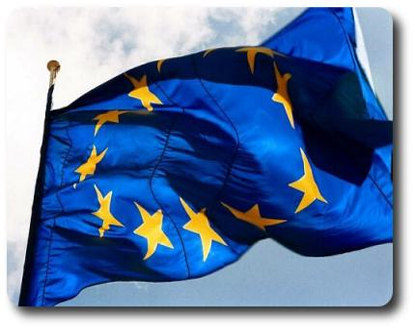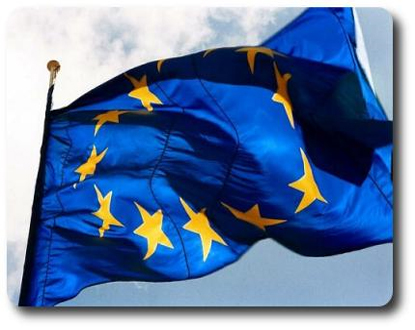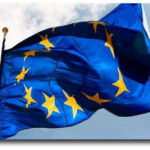The aim of these congresses is to allow a wide audience to gain an original understanding of the European challenges and issues that are not economic or political.

It is part of the second edition of the “Saint-Raphaël en fête” on October 2nd, allowing participants who wish to join the liturgical and cultural festivities of the city’s patronal feast
The cultural and spiritual Europe is a heritage that has been received and must be passed on while being enriched over time. We should not be ashamed of it.
That is why it seems important to us to receive the lights of history to understand contemporary challenges, just as it is necessary to recognize that religions, especially Catholicism, have been, are, and will be an inevitable component of its future.
- FIRST YEAR OCTOBER 2011 : Europe of yesterday
From the Battle of Lepanto to the Battle of Vienna, amidst the upheaval of ideas and religions, discover the stakes of a Europe on the verge of modernity, its protagonists, culture, strengths, and weaknesses.
- SECOND YEAR OCTOBER 2012 : Europe of today
Today’s Europe. Its projects, its stakes surrounding contemporary religious and cultural issues.
- THIRD YEAR OCTOBER 2013 : Europe of tomorrow
Catholicism in contemporary Europe. The Voice of the Church, what contribution to the future of Europe?
PARTNERS
Historians, writers, academics, European officials, representatives of religions..
Institutions: the parish of Saint-Raphaël, the association Friends of the Basilica, the municipality of Saint-Raphaël, the tourist office of Saint-Raphaël, the Social and Political Observatory of Fréjus and Toulon, the Saint Martin Community..
Program:
9:30 a.m. Reception of participants.
10:00 a.m. Opening of the symposium by Cardinal Canizares, prefect of the congregation for divine worship and the discipline of the sacraments.
10:15 a.m. Presentation of the symposium by Monsignor Ardura, president of the pontifical committee of historical sciences.
10:30 a.m. First conference: “Does Europe exist?” By Michel Fauquier, associate professor of history, Research Director at the Albert le Grand Institute in Angers.
11:15 a.m. Debate with the speaker.
11:45 a.m. Welcome cocktail for participants (free lunch).
2:30 p.m. Second conference: “Saint Pius V and the Battle of Lepanto”
by Monsignor Ardura.
3:15 p.m. Debate with the speaker.
3:45 p.m. Coffee break
4:00 p.m. Third conference: “The Papacy and the Siege of Vienna”. By Annie Laurent, Doctor of State in Political Science and Near East specialist.
4:45 p.m. Debate with the speaker.
5:15 p.m. Fourth conference: “Challenges inherited from the past: Europe and its centrifugal forces”, by Michel Fauquier.
6:00 p.m. Debate with the speaker.
6:15 p.m. End of conferences.
— Basilica of Notre-Dame de la Victoire—
6:45 p.m. Opening of the Saint-Raphaël festivities with the celebration of solemn vespers under the presidency of Cardinal Canizares and closing of the symposium by
Monsignor Ardura.
8:00 p.m. Dinner of the “Saint-Raphaël en fête”
Theme of the symposium:
The Battle of Lepanto marks the end of two centuries of Ottoman expansion in the Balkans, Central Europe, and the Mediterranean.
The border is now durably set between the Christian West and the Ottoman Empire.
Should we, however, consider these two entities as two antagonistic blocks, particularly on the religious level? This would suppose first
that each of them is homogeneous, religiously and politically, which, at the end of the 16th century, is far from being the case, especially for the West.
Historians often point out that the modern era sees the decline of the idea of Christendom and the assertion of the notion of Europe.
The confessional break stemming from the Protestant Reformation creates a new situation in the West: in a number of States, what the Roman Church condemns as heresy presents itself as the
authentic and exclusive expression of the Christian faith (England, Sweden, Denmark, many German principalities, United Provinces…);
or in countries of religious diversity, after a phase of conflict, a modus vivendi is more or less established, based on politico-religious agreements that give a legal status, and hence rights, to
heresy and heretics (Peace of Augsburg in the Holy Roman Empire in 1555, Edict of Nantes in France in 1598).
Furthermore, the development of the first colonial empires creates a new type of economic and political interest disputes between the
concerned powers: Spain, Portugal, France, England, United Provinces.
Certainly, the reference to the Respublica christiana does not lose all relevance: beyond confessional divides, commercial competition,
and national differences, Westerners retain the certainty of sharing a certain community of faith and civilization
– and indeed, paradoxically, oppositions and conflicts also contribute to the development of a common history.
This consciousness of identity is particularly affirmed in the face of the Ottoman neighbor.
He inspires both admiration, by John Sobieski at the Battle of Vienna
“Europe, its roots, and its Christian culture”
From Lepanto to Vienna: Europe against the Turks and against itself (1571-1683)
By visiting this page of Europe’s history can we dare to draw some parallels with the contemporary European issue?
The goal of this first year of the Basilica Congresses is not so much to seek unequivocal historical correspondences as to accept the
necessary hindsight, thanks to history, to address the religious Europe of today and tomorrow. its high level of military, administrative, and cultural development, but also the repulsion due to its irreducible attachment to Islam and its political system considered
despotic.
For many, the Turk is the other, the pagan, the barbarian, even if sometimes it is recognized that he can be refined.
However, although he remains nominally the “enemy of the Christian name”, the Turk is not the priority enemy in reality, except for the States
on the front line such as the hereditary lands of the House of Austria and
Hungary, as well as Poland, and for other reasons, the Papal State.
The 17th century, one of the most warlike in European history, knows few campaigns against the Ottomans until the 1680s. The main conflict
of the century is a genuine European civil war, the Thirty Years’ War (1618-1648), whose primary cause is the antagonism between
Catholics and Protestants in the Holy Roman Empire;
but various political vicissitudes turn it into a dynastic and national-type conflict between Bourbon France and Habsburg Spain, each of these
two great Catholic houses accusing the other of aspiring to “universal monarchy”. This shows that
the ideal of Christian unity gives way to the idea of a European balance.
To preserve this balance, and in particular to weaken the House
of Habsburg which, in one way or another, controls Spain, for a time Portugal, and their respective empires, a certain number
of Italian principalities and vast territories in central Europe, the French monarchy is ready to ally with Protestant powers,
and even with the Ottoman Empire.
This alliance is a constant of French diplomacy in
the modern era: it does not consist of joint military operations, but first a non-intervention of French troops
in anti-Ottoman operations, as well as regular diplomatic consultation, which always runs the risk
for the Habsburgs of a war on two fronts. The alliance is naturally accompanied by interesting commercial clauses.
Thus, we understand the French reluctance to participate in the Christian coalition aimed at repulsing the unexpected Turkish offensive of 1683.
Louis XIV sends only very late a completely symbolic contingent
to assist his brother-in-law, cousin, and rival, Emperor Leopold I, whose capital, Vienna, is besieged. The idea of a crusade, invoked by the pope and the emperor, is not enough to mobilize all Christians – even if the call is not in vain, as the emperor receives the support of a significant number of soldiers
from the German principalities (even Protestant ones)
as well as from Poland, under the command of King John III Sobieski. The siege of Vienna is lifted, Christians pursue the Ottomans
in the Danube basin, and reconquer all of Hungary, with Transylvania.
Henceforth, the Turk is no longer the invincible enemy: people even begin
to mock him in “turqueries”, a genre that becomes very successful in the 18th century, as demonstrated by Mozart’s The Abduction from the Seraglio.
David GILBERT
Saint Martin Community



